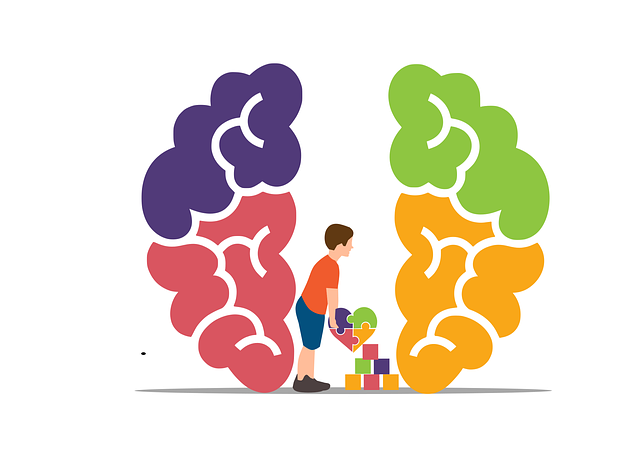In blended families, therapy and targeted interventions are vital for harmony. Risk assessment and harm minimization planning identify and mitigate conflicts and mental health challenges. Professional counselors use conflict resolution techniques and tailored programs to support individual needs. Burnout prevention among healthcare providers ensures consistent care. Comprehensive risk assessments address past traumas and interparental conflicts, fostering a safer environment. A multi-faceted approach combines risk assessment, awareness campaigns, mindfulness practices, and continuous professional development to minimize harm risks in therapy for blended families.
Risk assessment and harm minimization planning are essential components of therapy for blended families, helping to navigate complex dynamics and protect all involved. This article guides you through crucial aspects, from understanding risk assessment in these unique families to developing comprehensive harm reduction strategies. We explore identifying potential harms, creating effective plans, implementing practical strategies, and regularly reviewing and adapting safety measures. Discover how these steps can foster a secure environment within blended family structures.
- Understanding Risk Assessment in Blended Families
- Identifying Potential Harms and Their Sources
- Developing a Comprehensive Minimization Plan
- Implementation Strategies for Effective Harm Reduction
- Regular Review and Adaptation: Ensuring Continuous Safety
Understanding Risk Assessment in Blended Families

In the context of blended families, risk assessment and harm minimization planning are vital tools to foster a healthy and harmonious environment. These families often involve step-parents, siblings from previous relationships, and possibly children from diverse backgrounds, creating unique dynamic challenges. A comprehensive understanding of each family member’s emotional well-being is crucial; this includes identifying potential risks and triggers that could lead to conflicts or mental health issues. Therapy for blended families plays a pivotal role in navigating these complexities.
Professional counselors and therapists equipped with skills in conflict resolution techniques can guide such families through the process of risk assessment, helping them develop effective coping strategies. Mental wellness coaching programs designed specifically for blended families can offer valuable support, addressing individual needs while promoting overall family resilience. Additionally, burnout prevention strategies for healthcare providers involved in these families’ care ensure they remain equipped to assist, preventing professional exhaustion and maintaining consistent support.
Identifying Potential Harms and Their Sources

Identifying potential harms within therapy for blended families is a critical step in harm minimization planning. This process involves a thorough examination of various sources that could contribute to adverse outcomes, such as emotional distress or increased conflict. Blended families often bring together children from previous relationships with new stepparents, creating complex dynamic systems. Harms may arise from mismanaged expectations, communication breakdowns, or unresolved trauma within these families. For instance, inadequate communication strategies can lead to misunderstandings and resentment among family members, escalating into more severe issues like depression or burnout.
By recognizing these potential harm sources, therapists can develop tailored interventions. Effective communication strategies are essential tools for navigating the complexities of blended family dynamics. Equipping family members with skills to express their needs, manage conflicts, and foster empathy can significantly reduce the risk of harmful outcomes. Additionally, preventing burnout among caregivers is vital; supporting parents in managing stress and setting healthy boundaries helps create a more stable environment for all family members, thereby minimizing potential harms and promoting overall well-being.
Developing a Comprehensive Minimization Plan

Developing a comprehensive minimization plan is an integral part of risk assessment for therapy in blended families. This process involves identifying potential risks and hazards within the family dynamic and implementing strategies to mitigate their impact. Mental health professionals should consider various factors, including past traumatic experiences, step-parenting challenges, and interparental conflicts, which can contribute to heightened stress levels and increased risk of crises. By incorporating evidence-based practices and tailoring interventions to the unique needs of each blended family, therapists can effectively manage risks and foster a safer environment for all members.
A well-crafted minimization plan incorporates strategies for crisis intervention, such as providing parents with tools to de-escalate conflicts and promoting healthy communication patterns. Additionally, it may include recommendations for anxiety relief techniques and stress management practices that benefit both parents and children within the blended family system. Leveraging risk management planning for mental health professionals ensures that everyone involved has access to clear guidelines and resources to navigate challenges effectively, ultimately enhancing the overall well-being of the family unit.
Implementation Strategies for Effective Harm Reduction

Implementing effective harm reduction strategies requires a multi-faceted approach tailored to the unique needs of blended families. Therapy for blended families should prioritize risk assessment as a foundational step, enabling mental health professionals to identify potential triggers and vulnerabilities within the household. By conducting comprehensive risk assessments, practitioners can develop targeted interventions that address specific challenges, such as communication issues, stepparent dynamics, or adjustment problems.
Public awareness campaigns play a pivotal role in fostering harm minimization by educating both families and the broader community about the benefits of mindfulness meditation and conflict resolution techniques. These campaigns can help destigmatize mental health concerns within blended families, encouraging open dialogue and proactive coping strategies. Integrating mindfulness meditation practices into daily routines fosters emotional resilience, enhances family bonding, and promotes healthy coping mechanisms, ultimately minimizing the risk of harm and strengthening the overall well-being of blended family units.
Regular Review and Adaptation: Ensuring Continuous Safety

In the dynamic landscape of therapy for blended families, regular review and adaptation are paramount to ensuring continuous safety and effectiveness. Just as mental wellness is a living, evolving process, so too should harm minimization planning be continually assessed and updated. This proactive approach acknowledges that family structures and individual needs can change rapidly, requiring flexible strategies that keep pace with these shifts. By incorporating mental health education programs design elements into the review process, practitioners can stay informed about emerging best practices, enhancing their ability to provide tailored support.
Moreover, burnout prevention strategies for healthcare providers are an integral part of this dynamic cycle. Regular evaluations allow professionals to identify signs of professional exhaustion and implement necessary adjustments to maintain optimal mental wellness. This not only benefits the therapists but also ensures they remain effective in supporting blended families through complex transitions. Such continuous improvement reflects a commitment to both the well-being of the family units and the professionals guiding them.
Risk assessment and harm minimization planning are essential components of ensuring safety and well-being in blended families. By understanding potential risks, identifying sources of harm, and developing comprehensive minimization strategies, parents and therapists can create a supportive environment that fosters growth and minimizes negative impacts. Regular review and adaptation of these plans are crucial to address evolving challenges, ensuring continuous safety for all involved. Seeking therapy for blended families can significantly enhance these processes, providing specialized support tailored to navigate the unique dynamics of step-parenting and co-parenting relationships.














